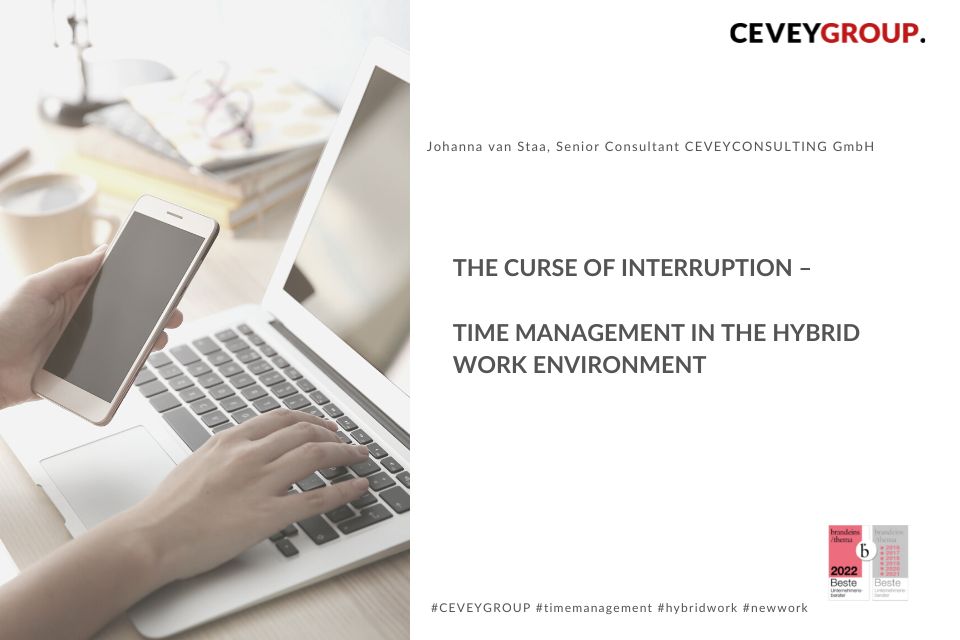It almost sounds like a curse. We are constantly interrupted. There have never been as many interruptions in our everyday working lives as there are today – a logical consequence of networking through the Internet and mobile communications?
Nowadays, the average office worker is interrupted every 11 minutes. The latest studies now even speak of “every 4 minutes”. Either way, it’s worrisome: after each interruption, an employee turns to two other tasks on average before returning to the original activity, about 25 minutes later. By the time he/she returns to the level of concentration, he/she had before the interruption, about 8 minutes have passed. That leaves 3 minutes of effective working time until the next interruption. And the flash of inspiration is gone again. The thought building that has just been artfully developed is brought crashing down again. 58 billion euros alone are lost each year because employees in knowledge-intensive professions are constantly interrupted in their work processes.
This in itself is a topic that definitely needs attention when we think about EFFICIENCY in companies: buzzwords such as meeting culture, e-mail flood, multitasking, focusing of communication channels and focus times can be good starting points for internal company discussions here.
In hotly debated hybrid times, you could also ask yourself the question: Where does one actually work more concentrated? At home or in the office?
On the one hand, there are many companies that are now “calling” their employees back to the office. There are even companies that pay their employees so-called “office bonuses” for a certain number of days on which they are present in the office. Especially when creativity is required. There are studies here that clearly show that being “in the room with colleagues” together really does add significant value to innovation (especially if you close the door and leave your cell phone in your pocket 😊).
On the other hand, it is observed that precisely because the time when people meet in person in the office has become so rare, all interaction processes are packed into this time: Arrangements, informal exchanges, etc. Many employees now report that they hardly get to work in the 1-2 days they are on site, because they are constantly (intentionally and unintentionally) in conversations with colleagues. In other words, they are constantly interrupted. In addition, there is the noise in offices when suddenly everyone is on site again, which one is hardly used to after the Corona time. Sometimes it can be really hard to concentrate. Often the tenor is that one is glad to be back in the home office for a few days to work on topics “undisturbed” and “concentrated”.
But in the end, it’s probably also a question of one’s own discipline here or there: because if you reach for your cell phone every few minutes at home (on average, people do this about 88 times per workday) or answer every incoming e-mail immediately, you will also not be able to really concentrate on a topic at home.
Here, for example, apps like “Plants” or “Forest” can be quite funny ideas. In case you haven’t heard of it yet: You basically plant a tree for a certain period of time – and if you pick up your phone to do other things in between, the tree dies.
Either way, uninterrupted working time is important. For more efficiency, for less stress, for more satisfaction and ultimately also from an economic perspective. Companies should urgently take active and conscious countermeasures here.
Author: Johanna van Staa, Senior Consultant CEVEYCONSULTING GmbH
#CEVEYGROUP #timemanagement #newwork #leadership

